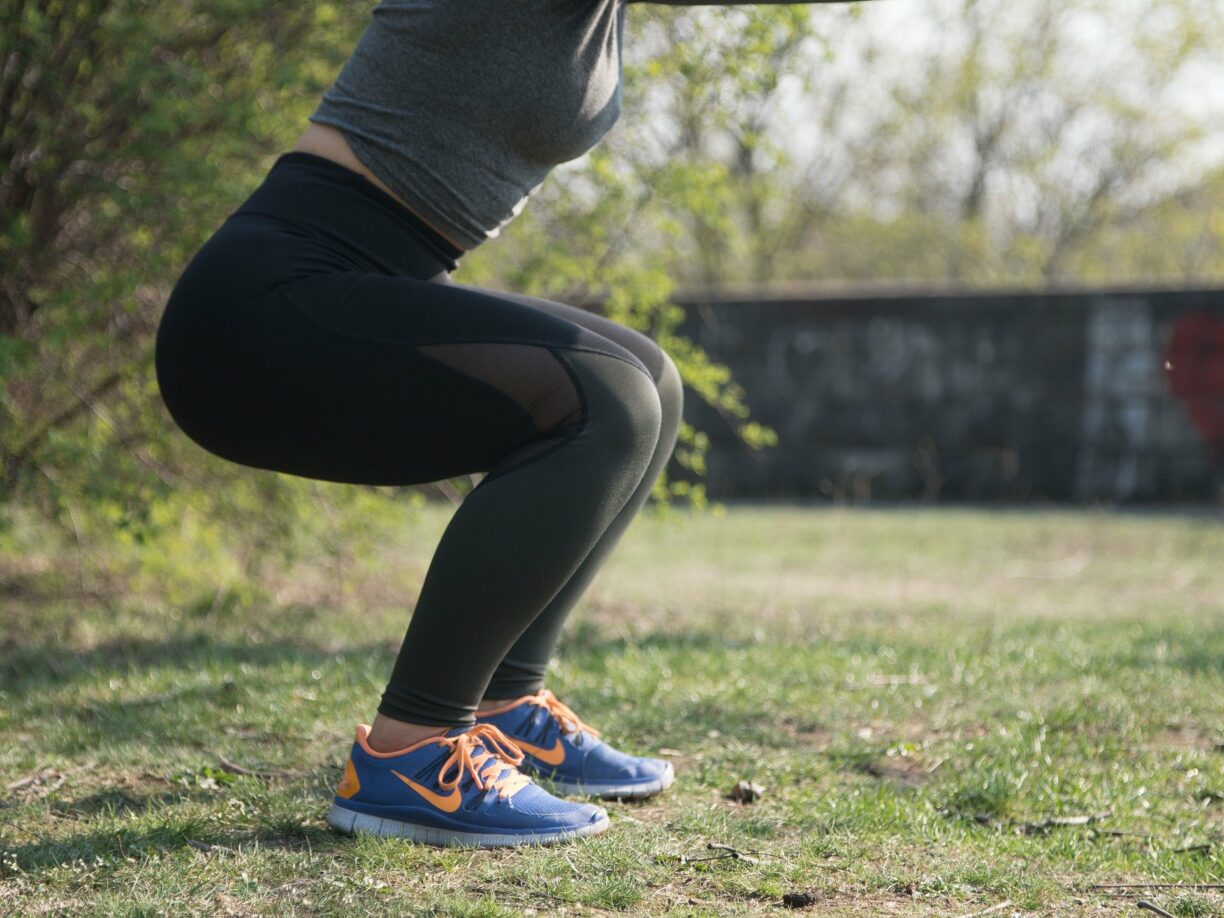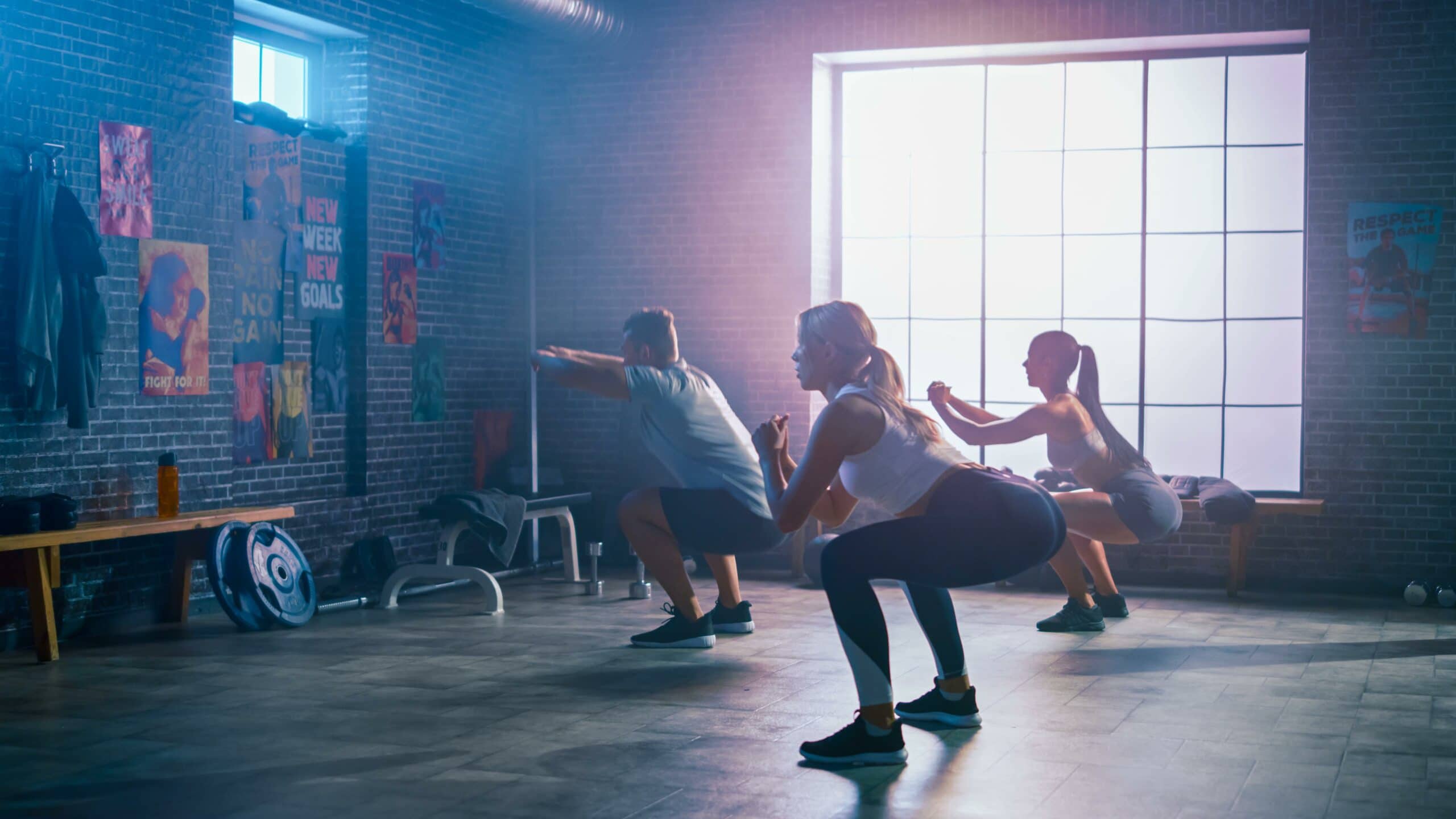The squat is one of the basic functional movement patterns that we all perform multiple times per day as we go about our normal routines. For that reason, the squat has become one of the staple exercises that should be included in your gym program.
What is a Squat Progression?
There are countless variations of a squat that can be done, so how do you choose which one to do? Many of these variations can be considered a squat progression, where an aspect of the exercise is made more challenging. The squat can also be regressed which makes the movement pattern more manageable to allow you to get started.
Progression is key when it comes to strength training, when an exercise starts to feel easier, you should look to progress each exercise in order to stimulate a positive adaption in the body.
This post will discuss some of the available squat progressions that you can choose from. After reading this post you will feel more confident in how to make the decision to progress your squat in order to achieve your desired outcomes.

Squat Progressions
Increase the Resistance
Adding weight to your squat is the simplest way to make it more challenging. In order for increased strength or hypertrophy to be an outcome of the exercise, you will need to push your muscles to failure. This means that after you finish your last repetition of each set, you should struggle to manage another repetition if you tried.
You might consider doing more repetitions, but this wouldn’t be your best option as you would be unlikely to get your desired outcome from the exercise.
Instead you need to increase the weight that you use in order to keep the number of repetitions that you reach failure at the same.
To learn more about how you can manipulate the number of repetitions and sets to achieve your goals, whether that be strength or hypertrophy, read What are Reps and Sets? A Beginner Guide to Strength Training.
Make it More Quad Dominant
The muscles around your hips and your knees work together during a squat to control the movement. Each variation of the squat will change the proportion of work that the muscles around your knee and hips are required to do.
Asking more from the muscles around your knees and less from the hips would be considered a quad dominant exercise. A hip dominant exercise would utilise the muscles around your hips more than those around your knees.
The following list contains some of the squat variations, written in order of quad dominant at the top, to hip dominant at the bottom.
- Overhead Squat
- Front Squat
- High Bar Squat
- Low Bar Squat
- Hex Bar Deadlift
Basically, the more upright your body stays during the squat, the less your hips bend, resulting in more work being required from the muscles around your knees.
So, a squat progression might be to pick a variation that is more of a quad dominant exercise than the one you have currently been doing. For example, if you are currently doing a high bar squat (a variant of the back squat) you might consider progressing to a front squat.

A similar approach can be used to adapt your gym program around any knee pain that you might be suffering. To learn more about this, read Knee Pain When Squatting: What Should I Do?.
Time Under Tension
Slowing down your squat will increase the time that your muscles are under tension. Doing so will demand more work from your muscles as they have to work for a longer period of time. This can be done by changing the tempo of the movement or by pausing at the bottom of your squat before returning to the start position.
Introduce Power
Alternatively, increasing the speed that you perform the exercise is a form of squat progression. This will develop power in your muscles. Having strength is one thing but being able to access that strength quickly is another.
This can be done by progressing to exercises such as a squat clean or a snatch.
Squat Deeper
A deeper squat will ask more of the muscles around your knees than a shallower squat. So a squat progression might be to concentrate on the lowest part of the squat. An example of this would be a goblet squat.
Unilateral Squats
Squatting using only one leg will understandably ask more from your muscles than squatting with both legs. Your balance will also be challenged in addition to your strength. You can do this by working through some pistol squat progressions.
Final Thoughts on Squat Progressions
As mentioned previously, planning progression into your gym program is an important part of strength training. Don’t be in a rush to move through each progression. I suggest getting to grips with one variation before moving onto the next. Try to avoid the temptation of chopping and changing between each progression.
For details on how you can progress the other functional movements, read 7 Functional Movement Patterns: Progressions, Regressions and Modifying Around Pain.

